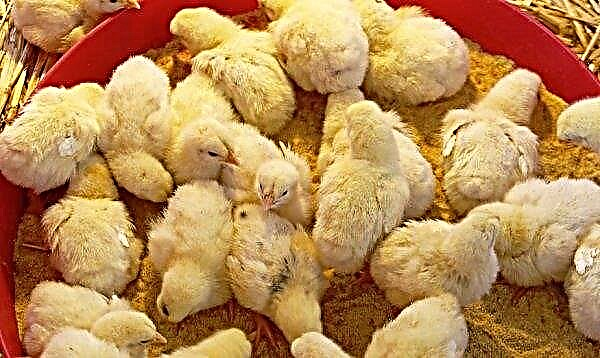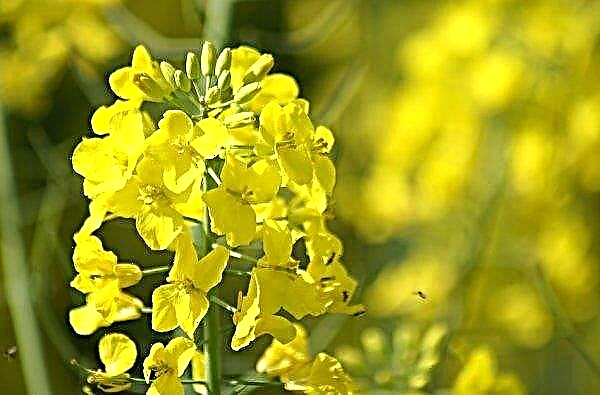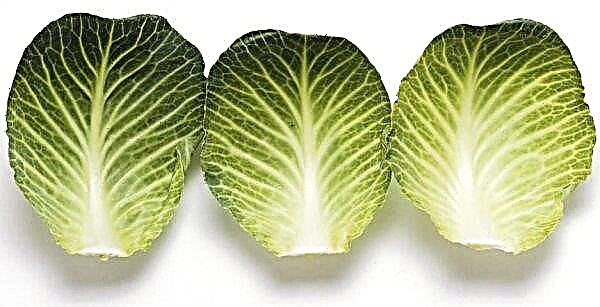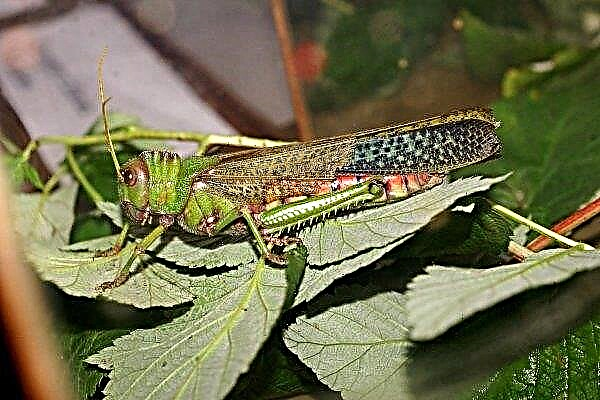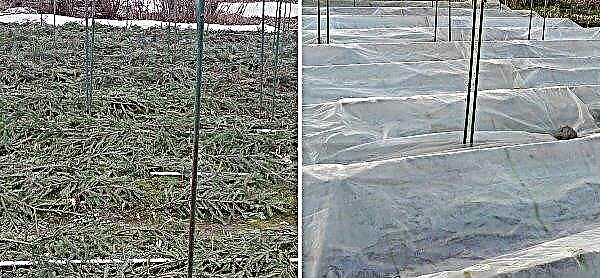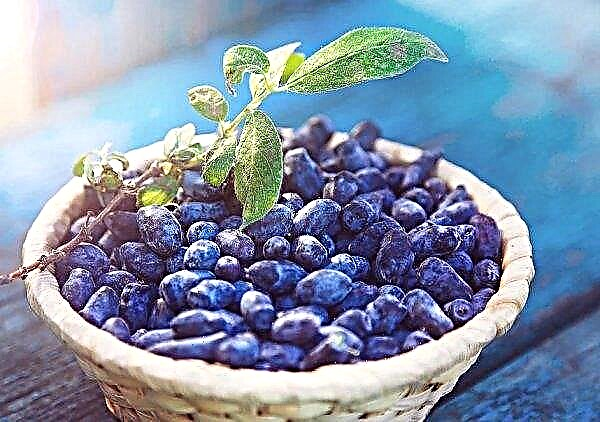Ruskus is not often found in home flower collections. Despite its high decorative value, this species has gained popularity only among true connoisseurs of exotic flora. In addition to decorative significance, it has unique medicinal properties. This article describes the main features of this plant, as well as the main subtleties of its cultivation.
Plant description
Ruscus is an evergreen shrub from the Asparagus family, up to 60 cm high. It is formed by branched shoots covered with scaly bark. On them, small alternate ovate leaves develop. They are devoid of cuttings and are modified branches of shoots. The upper edge of the leaf is decorated with a small spine, which in the natural environment helps protect the plant from ruminants. Hence the second name of the plant - needle. Her root system is creeping, surface type.
Spread
In the natural environment, the shrub is quite widespread. On the territory of Macronesia it can be found on the Azores and Canaries, as well as on Madeira. In Africa, the plant is common in Tunisia, Morocco and Algeria. In the vastness of Eurasia, ruscus is found everywhere, up to the Crimea, the Caucasus and Transcaucasia. The plant is also represented by specimens from Asia: it can be found in Palestine, Iran and Turkey.
How to bloom
The needle often blooms in the second half of spring, however, there are some species that can bloom in late autumn and early winter. During flowering, small inflorescences develop on the plant, located on short pedicels. They grow directly from the leaves and are distinguished by a whitish or purple nimbus about 1 cm in diameter.
The flowers of the plant are heterosexual, so for pollination of Ruscus to occur, you need to acquire specimens of both sexes. After pollination, small fruit-berries of a saturated red hue develop from the flower. In each fruit, 1 or 2 seeds ripen, which under optimal conditions can give a young plant.
Important! With the fruits of the needle, you need to be careful: even in a small amount, they can cause all kinds of digestive disorders and intoxication of the body.
Ruskus (needle): home care
The main feature of this plant is that it has the ability to adapt to any living conditions. Ruscus can be without water for a long time, as well as bright sunlight. But in order to achieve special decorativeness and greenery from the needle, she must create optimal conditions, including appropriate watering.
Lighting
This shrub is successfully grown both in partial shade and on well-lit window sills. The lack of light does not affect the appearance of the plant, but its excess can harm (cause burns). The most favorable place for the development of the bush is considered to be the back of the room or a well-shaded window sill.
Temperature and humidity
Ruskus is able to grow and develop at any room temperature, however in winter this indicator should not be lower than + 13 ° C, otherwise the needle can become ill and die. The plant tolerates heat very well, but the most decoratively valuable specimens develop at an average daily optimum of + 18 ° C: in this case, not only uniform growth is observed, but also longer and longer flowering of the bush.
Regarding humidity, this species is also unpretentious, it tolerates dry air, therefore, does not need additional moisture. But high humidity is detrimental to Ruscus. Under its influence, the plant can rot and slowly fade. Although during hot summers, a light spraying of a plant from a spray gun once every 2-3 days positively affects both the growth and color of the foliage.
How to water
The needle is watered sparingly and very gently. This species does not tolerate even short periods of waterlogging of the substrate, which is always accompanied by putrefactive lesions of the roots. Watering is carried out as necessary, in small portions and only after the soil dries well. Although during the spring, they resort to the procedure regularly, since at this time there is an active growth of shoots, requiring a moistened substrate. Use only clean, well-defended water, heated to room temperature (+22 ... + 25 ° С) for irrigation.

Soil and fertilizer
For planting Ruscus use any well-fertilized soil for home flowers. The main requirement for the substrate is high air permeability, so the soil must necessarily consist only of loose components. The optimal substrate should contain sand, turf and leafy soil (1: 1: 3). For these purposes, purchased soil, which does not contain clay components, is also suitable.
The needle is fed only during active growth, from March to the end of May, although if necessary, the procedure can also be performed in the summer. They do top dressing once a month: for this, they use any complex mineral mixtures for cacti and succulents (Pokon, "Flower Paradise", "Agricola", etc.). They contain the optimal ratio of potassium, phosphorus and sodium, as well as minerals important for growth and development.
Did you know? Indoor plants first appeared in ancient China, about 5 thousand years ago. It is assumed that the ancient physicians specializing in the treatment of herbs and their extracts were the first to grow them.
Capacity for landing
For planting this flower use any garden containers made of glass, ceramics, plastic and other materials. Their main condition is a functional drainage hole, without which the root system of the ruskus will be susceptible to putrefactive lesions. If you are replanting an adult plant, then choose a new pot 4-5 cm wider than the old one. A young plant can be planted in both wide and narrow containers. In the first case, the ruskus will quickly fill the soil, which will form a large and voluminous bush. And in a narrow pot, the needle will give a small but elegant bush, distinguished by only a few shoots.
Pruning and rejuvenation
The bush does not need frequent pruning, including for rejuvenation. Sanitary pruning is carried out as necessary: to remove faded leaves or non-viable shoots. Needles rejuvenation combined with transplantation, spend it in early spring, while diving the bush in a new pot. Large and damaged shoots, at least 2-3 years old, must be removed.
Pruning is done using a garden pruner or knife. Before the procedure, such an instrument must be sterilized with 70% alcohol or 1% potassium permanganate solution. Places of cuts are necessarily treated with chopped wood ash, this helps to protect the Ruscus from damage by fungi.
Types of ruscus (iglitsa) with a photo and description
Today, several popular varieties of this plant are known. Their main difference lies in the size and shape of the leaves, which gives the Ruscus unique features.
Needle Pontic
This species is distinguished by a rather tall bush, the average size of which is within 60 cm, but under optimal conditions it can be extended up to 1 m. It is found in nature in the Mediterranean, the Caucasus and the Crimea. This Ruscus has erect shoots that are densely covered with lanceolate, leathery leaves located on leaf-shaped branches of a saturated dark green hue. The plant blooms from November to December. During flowering, small green-violet flowers develop in the bosom of the bract of the bush. Under optimal conditions, large saturated red fruits appear in their place.
The needle is sublingual
The hypodermic needle is a small plant 30–40 cm high. In cultural conditions, this species is not common, since today it is on the list of rare and endangered plants. In nature, it can be seen mainly in the Crimea and Asia Minor. The plant is distinguished by dark green leaves, as well as bisexual flowers, capable of self-pollination. Flowering is observed during April-May. The fruits of this needle are small, bright red hues.

Leaf needle
This species grows to an average of 50 cm, its stems are branched, leaves are bright green in color, which are characterized by an oblong-lanceolate shape, with a slight narrowing at the edge. In nature, the plant is found in the Mediterranean and Transcaucasia. During flowering, small white or pale blue flowers appear on the bush, collected in inflorescences of 3-10 pieces. After flowering, a small red berry is formed, with fleshy flesh.
Needle Hyrcanic
This plant is considered a relict species, which in the wild is distributed mainly in the Caucasus and Northern Iran, although occasionally it can be found in the Crimea. The bush reaches a height of no more than 40 cm, it is formed by branched stems with leaf-shaped formations of oblong-ovate or lanceolate-ellipsoid shape. Flowers are observed in April, usually they gather in small inflorescences of 3-5 pieces, but sometimes they can grow alone. The fruits are small, less often - medium, fleshy, rich red color.
Needle Colchis
Representatives of this species are known for their large, pointed-shaped leaves, as well as weakly branched stems, no more than 40-50 cm tall. In the natural environment, the plant can be found in Turkey, Crimea, Georgia, and southern Russia. The flowering of the Colchis needle is observed throughout the autumn and winter, the flowers appear evenly, after which the berries ripen in the spring. This plant is considered medicinal, since on its basis a large number of drugs for traditional and traditional medicine are created.
How to transplant Ruscus
This plant is transplanted by transshipment. The most favorable period for the procedure is the first half of spring. The procedure is carried out no more than 1 time in 3 years.
The main stages of transplantation:
- Treat the new container with 70% alcohol or 1% potassium permanganate solution (for disinfection), and then rinse it thoroughly under running water.
- Lay a 3-4 cm layer of gravel on the bottom of the sterile dish, and 4-5 cm of new soil on top of it.
- Carefully remove the bush from the old flowerpot (along with soil). The excess of the old substrate can be shaken off, but the root layer of the soil must remain on the bush.
- Place the plant with a lump of soil in a new container, fill the cracks between the flowerpot and the plant with new soil.
- Water the plant well and put the flowerpot in a warm place.

Ruscus breeding
This species is propagated both vegetatively (by cuttings) and generatively (by seeds). It is believed that vegetative propagation is simpler and more effective. During the process, it is not necessary to create a special microclimate for germination, which is a prerequisite in the case of seed germination.
Vegetative
Vegetative propagation begins only after the bush has fully grown and grown. This will require at least 3-5 years, otherwise the procedure can affect it fatally. Reproduction is carried out during transplantation, but no later than mid-spring. The most favorable for this is the method of dividing the bush.
The main stages of Ruscus reproduction by dividing the bush:
- Prepare the soil and 2-3 garden containers for planting.
- Fill the pots with a drainage layer of gravel, pour new soil on top of it.
- Carefully remove the plant from the old pot with a lump of soil.
- Thoroughly rinse the old substrate from the root system under running water.
- Divide the bush with a sharp knife into 2-3 parts, be sure to treat the places of cuts with crushed charcoal (for disinfection). In this case, it is necessary to remove old and non-viable shoots.
- Place the dividers in a new pot, cover the roots with soil, and then water well.
- Transfer the plants to a warm, bright place and care for them as if they were an adult.

Seeds
Seed propagation is started only if there is an urgent need to cultivate a new variety or a hybrid of Ruscus. To perform the procedure, you will need quite serious skills in floriculture, so only experienced florists will start it.
The main stages of seed propagation:Important! For breeding ruscus use only a sterile substrate. For this his 15–20 minutes roast in the oven at + 125 ° C or freeze in the refrigerator 2–3 days at a temperature of -20 ...- 25 ° C.

- Sterilize the seed. To do this, it is soaked for 20 minutes in a 1% solution of potassium permanganate.
- Fill wide containers or garden pots with soil. For germination, a mixture of equal parts of peat and sand is suitable.
- Make longitudinal rows of 2 cm deep in the ground at a distance of 3-4 cm between each.
- Sow the rows with seeds and cover them with a soil layer of 2 cm, then water abundantly.
- Cover the seeded pots with transparent polyethylene or glass and place in a warm, well-lit place with a temperature of +22 ... + 25 ° С.
- After 2-3 months, when the first sprouts appear, crops must be thinned out.
- In the phase of 2-3 leaves, remove the protective cover from the containers, and dive seedlings into individual pots.
Practical use
The main use of the needle is the landscaping of landscapes and premises, although this plant is also used for medicinal purposes. In addition to a general strengthening effect, it is able to heal the body, as well as cope with many diseases.
Healing properties
The healing properties of ruskus have been known since antiquity. This shrub has a stimulating and anti-inflammatory effect on the human body, making it so popular in folk medicine. For the preparation of medicines, rhizome and plant fruits are usually used, on the basis of which all kinds of decoctions, infusions and ointments are prepared.
- Such funds are especially effective for:
- jaundice
- pathologies of the cardiovascular system;
- renal failure;
- thrombosis;
- atherosclerosis;
- headaches;
- varicose veins;
- gout
- hemorrhoids;
- edema;
- gangrene
- Meniere's disease;
- Alzheimer's disease;
- Raynaud's affliction.
Contraindications
Despite a wide range of useful properties, the needle and has a number of contraindications.
- It is strongly recommended not to use extracts from this plant in such cases:
- with inflammation of the bladder and urinary tract;
- with hypertension;
- during pregnancy.
Is it suitable for the formation of bonsai
In the homeland, the needle tree is not considered a popular species for growing miniature trees, but in the USA and Europe it is often used to form bonsai.
To grow such a composition, you must adhere to the following rules:Did you know? The seeds of some varieties of Ruscus are used as an alternative to coffee. Such a drink is not only devoid of harmful caffeine, but also has a beneficial effect on human health.
- only small pots are used in the technique;
- exceptionally poor sandy soil is suitable for ruscus bonsai;
- so that the plant is not excessively tall, it is weakened: for this, young roots are removed before transplantation, and small cuts are made on the trunk;
- It is not easy to form a crown from a needle, so a garter of the branches with a wire or a strong thread will be required;
- Carefully pruning the bush before planting will help to grow a small tree: for this, it is cleaned of all young shoots and young roots.
Growing problems
Ruscus is considered a fairly unpretentious plant, so problems with it arise infrequently. In most cases, they are the result of improper care of the plant. In other cases, this shrub is resistant to all kinds of diseases, as well as pests.
Disease
It is believed that ruscus has natural resistance to all kinds of fungi, therefore, it is affected by them only with low immunity. But with errors in watering and moistening, rot may develop on the bush. Overcoming them will help trimming the affected parts, including rhizomes, as well as treating the plant with Fitosporin solution (1.5 g / 2 l of water).
Pests
The most common pests on this shrub can be found:
- spider mite;
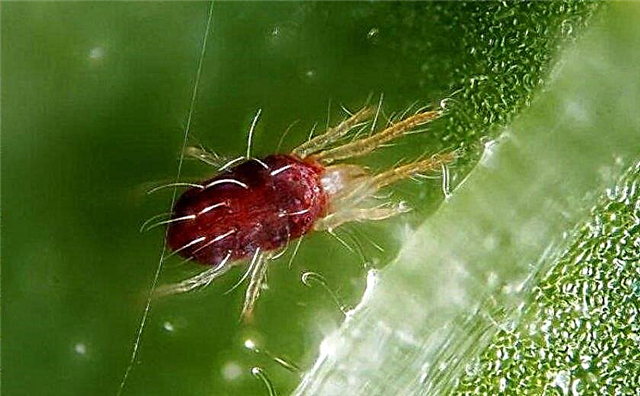
- Mealyworms

- thrips.
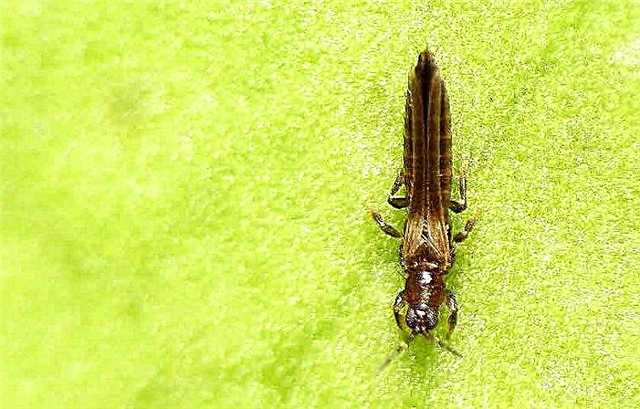
The most popular among them are drugs:
- "Actellicus";
- "Bi-58";
- "Haupsin";
- Fitoverm.
Leaf problems
The main problems with the leaves of the needle and methods for their elimination are presented in the table:
| Problem | Cause | Remedies |
| Yellowing, twisting, a slight pale coating may be observed on the bottom of the sheet | Pest | Sick plants are treated twice (with an interval of 14 days) with fungicides |
| Putrid foci | Phytosporosis caused by improper hydration | Putrid foci are removed, diseased plants are treated with Fitosporin. Be sure to adjust the irrigation mode, as well as air humidity |
| Small dry or yellow spots on the foliage | Sunburn | The plant is transferred to a place with more diffuse light or shaded with a translucent curtain |
| Yellowing leaves | Rotting due to irrigation | The multiplicity of watering is halved, if necessary, the bush is replanted, removing putrefactive foci |
Ruskus is one of the few plants that has universal significance for humans. In addition to high decorative value, it has healing properties. Today this plant is increasingly found in home floriculture, but it is suitable only for real professionals who can provide proper care to the plant.




